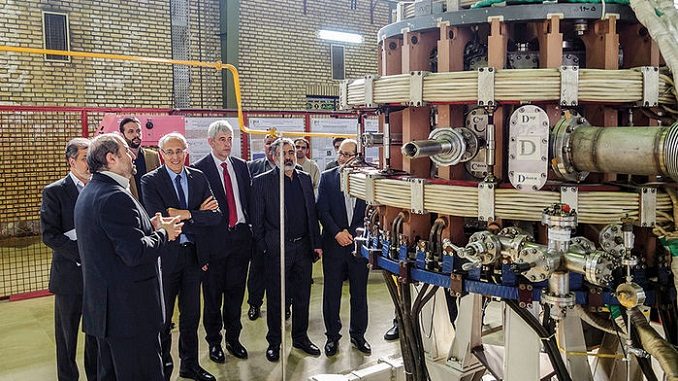
The Iran nuclear deal was meant to usher in a new era of science cooperation between the Islamic republic and other parties to the landmark agreement, which deters the country from pursuing nuclear weapons in exchange for sanctions relief.
But nearly 2 years after implementation began, few projects are underway. Science Magazine has learned that the United States has frozen Iran out of a collaboration that the deal expressly brokered: ITER, the multibillion-dollar fusion experiment in France.
“Iran has been poised for months to ink an agreement to join ITER in a limited capacity until President [Donald] Trump took office,” says Ali Akbar Salehi, president of the Atomic Energy Organization of Iran here.
An ITER official who requested anonymity because of the matter’s sensitivity confirms that the U.S. is blocking Iran through its seat on ITER’s governing council, which must approve Iran’s participation unanimously.
Bringing Iran into ITER was expected to be straightforward. The long delay, European and Iranian officials say, casts a pall on other scientific collaborations expected under the nuclear deal. An ITER council meeting later this month is expected to take up the issue. Last month, Trump declared that the JCPOA is not in the United States’s national interest; his decertification gave the U.S. Congress 60 days to reevaluate it.
“That’s a nonstarter. There will be no more negotiations. That’s it,” Salehi says. Officials in the European Union have said the same. Some joint research is slated to occur at the Fordow Fuel Enrichment Plant in Iran. Fordow has two wings, each a roughly 15-meter-wide tunnel.
“In one wing, Iran is spinning centrifuges to enrich uranium until it contains at most 3.67% of the fissile U-235 isotope, the agreed limit. Iran is working with Russia to configure other centrifuges to produce stable isotopes useful in medicine. Progress is good, but there is still a long way to go,” Salehi says.
Iran has floated the idea of a “multipurpose” lab with instrumentation for unspecified types of nuclear analyses. But none of the JCPOA parties are rushing to build up science capacity at Fordow.
“We want something at Fordow that would promote international scientific cooperation, which increases transparency and openness,” explains one European official, but he wants to ensure that the facility would not allow Iran to develop techniques useful for evading inspections or sanctions.
Salehi says the EU intends to allocate €20 million to build a center of excellence in nuclear safety in Iran. The two sides hope to make progress at a workshop in Isfahan, Iran, this month.
A few other collaborations with Europe are in the works. The Iranian Light Source Facility, a synchrotron under construction here, will build a beamline and experimental station at the Elettra synchrotron in Trieste, Italy. Some two dozen Iranian scientists and engineers will train there, and the beamline will be shipped to Iran when its synchrotron is completed.
And Iran is in early talks on possible participation in the Joint European Torus, a fusion experiment in Culham, UK, and the planned Facility for Antiproton and Ion Research in Darmstadt, Germany.
But Iran’s aspirations to join ITER hang in the balance. Iran wants to train doctoral students at ITER, and scientists here would study plasmas on the project’s behalf. The country’s ITER representative, plasma physicist Mahmood Ghoranneviss, says Iran hopes its limited involvement would, in a few years, blossom into full membership—a step that would infuse considerable cash into the experiment.
“The delay is frustrating. In fusion, there are no secrets. But in our case, science and politics are mixing,” Ghoranneviss says.
